
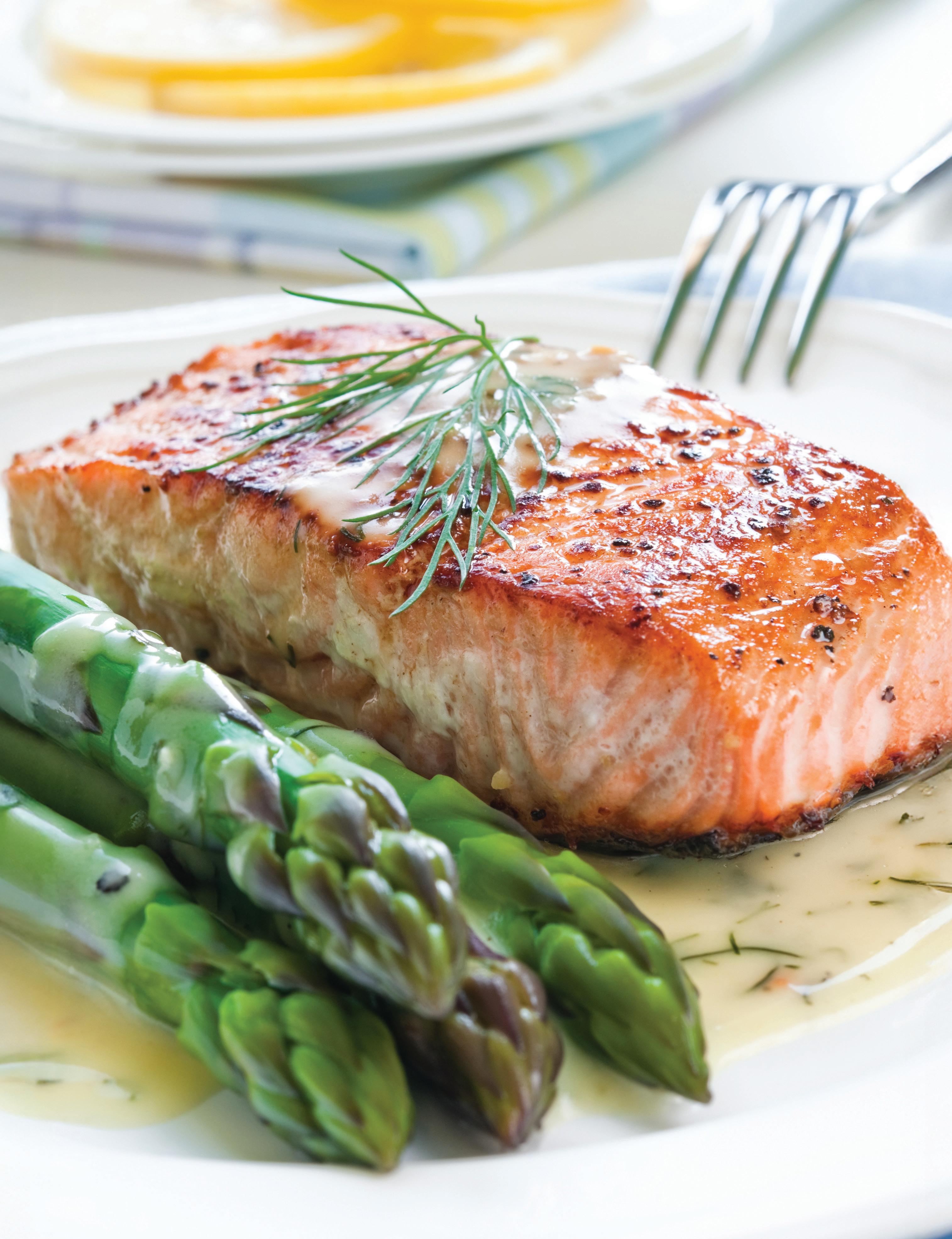
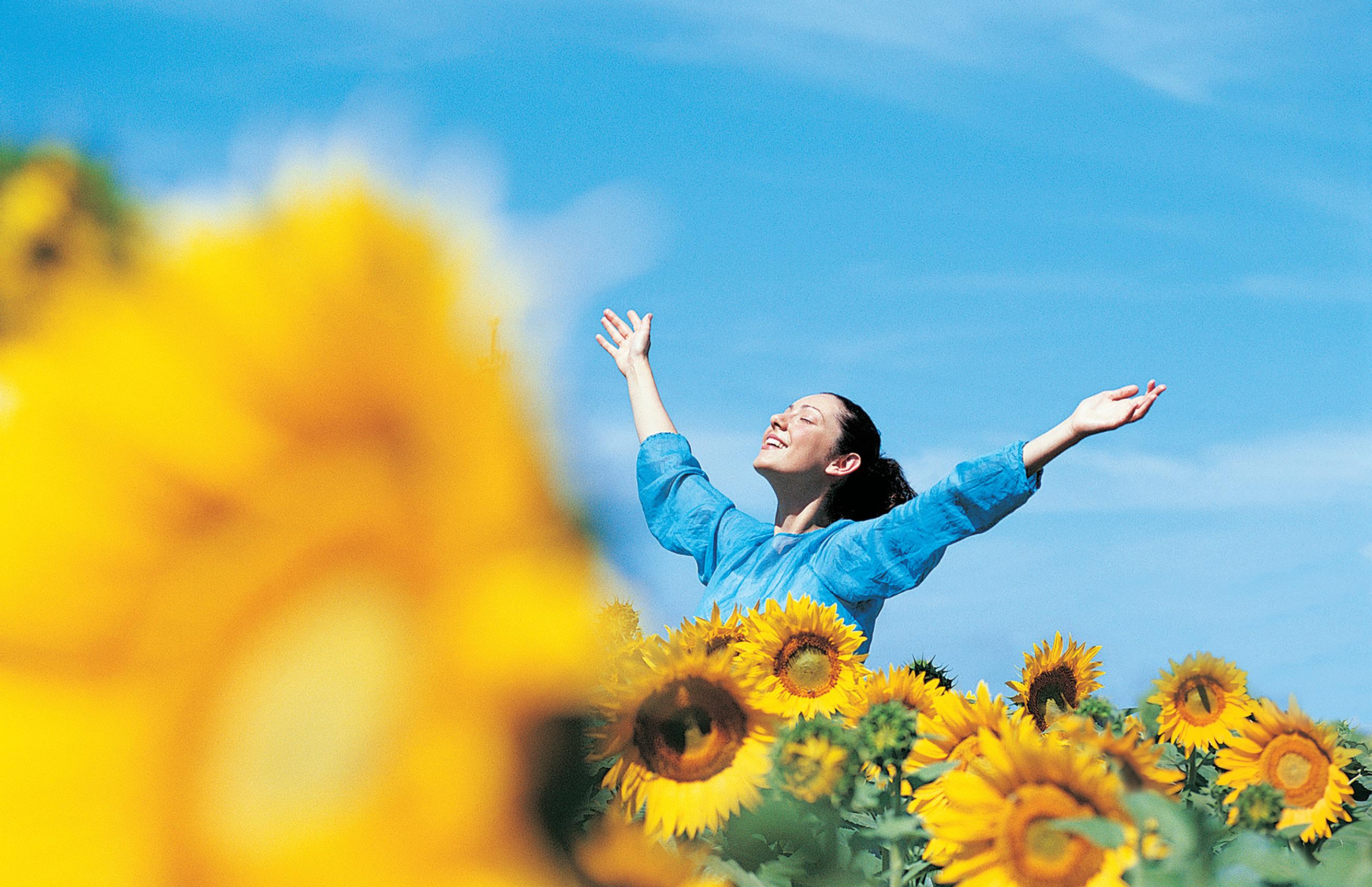




Make a meaningful impact in your community by becoming the owner of a Natural Awakenings magazine.
Empower others with current, valuable insights and resources to enhance their physical, mental, emotional and spiritual well-being.
As a franchise owner, you’ll inspire positive change, provide readers with tools for healthier living and connect local businesses with an audience eager for transformation.
Why Own a Natural Awakenings Magazine?
n Create a Healthier Community: Be the go-to resource for wellness and personal growth in your area.
n Boost Your Income: Take control of your financial future with a proven business model.
n Enjoy a Flexible Lifestyle: Work from home while pursuing a fulfilling, dynamic career.
n A proven business model with low startup costs.
n Comprehensive training and friendly, ongoing support.
n Flexible work schedule with many work-from-home opportunities.
n Access to a network of like-minded franchise owners.
n Financing Options Available.
Join a thriving network of passionate franchise owners reshaping the future of holistic health and wellness.
Call 239-206-2000 for a FREE evaluation of your community’s potential. Learn more or apply today at: Corp.NaturalAwakenings.com

Call for a free evaluation of your community's potential at 239-206-2000. To apply or learn more, visit Corp.NaturalAwakenings.com.
Add Your Community to Where Natural Awakenings Is Now Publishing:
• Atlanta, GA
• Boston, MA
• Broward County, FL
• Bucks/Montgomery Counties, PA
• Central Florida/Greater Orlando, FL
• Central New Jersey
• Charlotte, NC
• Chicago, IL
• Columbia, SC
• Dallas, TX
• Daytona/Volusia/Flagler Counties, FL
• Detroit/Wayne County, MI
• Fairfield & Southern Litchfield Counties, CT
• Grand Traverse Region/Northern Michigan
• Greater Ann Arbor, MI
• Greater Lansing, MI
• Greater Oakland, Macomb, Livingston, Genesee, MI
• Gulf Coast, Alabama/Mississippi
• Houston, TX
• Jacksonville/St. Augustine, FL
• Lancaster/Berks, PA
• Lehigh Valley, PA
• Long Island, NY
• Milwaukee, WI
• Monmouth/Ocean Counties, NJ
• Naples/Fort Myers, FL
• New York City, NY
• North Central New Jersey
• North New Jersey
• Northwest Florida
• Palm Beach, FL
• Philadelphia, PA
• Phoenix, AZ
• Rhode Island
• Richmond, VA
• Sarasota, Manatee, Charlotte and DeSoto Counties, FL
• South Central Pennsylvania
• South Jersey, NJ
• Southeast North Carolina
• Space & Treasure Coast, FL
• Tampa, FL
• Tucson, AZ
• Twin Cities, MN
• Westchester/Putnam/Dutchess, NY
• Western Michigan






Publisher Tracy Jacox-Gunter
Editor Sara Gurgen
Design, Production & Digital Marketing Kristina Parella
Contributing Writers Michaela Leung Tiana Tarver
Distribution Manager Larry Gunter Ad Design Lauren Arabis
Website Matthew Davis
MsTracy@MidlandsNA.com
Tracy Jacox-Gunter Ph: 839-228-1158
Website
ColumbiaNaturalAwakenings.com

Save a Tree Scan Me
CEO Kimberly B. Whittle
National Editor Sandra Yeyati
Editor Brooke Goode
Copy Editor/Proofing Melanie Rankin
Layout Flip180 Media
Natural Awakenings
Publishing Corporation
350 Main Street, Suite 9B
Bedminster, NJ 07921
Ph: 239-206-2000
NaturalAwakenings@KnoWEwell.com
Cover image by by webstoodio

Natural Awakenings is printed on partially recycled and fully recyclable newsprint with black soy ink.
© 2025 by Natural Awakenings. All rights reserved. Although some parts of this publication may be reproduced and reprinted, we require that prior permission be obtained in writing.
Natural Awakenings is a free publication distributed locally and is supported by our advertisers. Please call to find a location near you or if you would like copies placed at your business. We do not necessarily endorse the views expressed in the articles and advertisements, nor are we responsible for the products and services advertised. Check with a healthcare professional regarding the appropriate use of any treatment.

Dear Natural Awakenings family,
October has always carried a special kind of magic. As a child, it was the time of year when the fair rolled into town, bringing lights that danced against the autumn sky and the mouthwatering smell of fried treats I anticipated devouring with reckless joy. I remember clutching a stick of cotton candy, its sweetness dissolving into a pure, timeless delight. Alongside that spun sugar cloud, I cherished the simple joy of biting into a mustard-topped corn dog and savoring a sticky candy apple. Those flavors were the taste of childhood magic, as vivid as the rides that made my stomach do flips.
Now, as an adult, the season holds a different meaning. I no longer chase the dizzy thrill of carnival rides—or the sugar, fried food and salty treats that once went with them. Instead, I seek moments of reflection and peace. Autumn has become a gentle teacher, showing me that change is both natural and necessary. When I see the leaves drift slowly from their branches, I’m reminded that life too requires us to let go. Just as the trees release what no longer serves them, we must also release the people, habits or situations that keep us from becoming the best version of ourselves.
This season is an invitation to clear not only our homes but also our minds and hearts. Releasing the unnecessary creates space for the new—new opportunities, new relationships, new dreams. Just as we clean our closets to make room for a fresh wardrobe, we must also clear our inner spaces so that our deepest desires have a place to land and flourish. Holding on too tightly to the past can block what is meant for us, while letting go brings a freedom that allows us to move forward with confidence.
As I reflect on the journey from childhood wonder to adult wisdom, I see how October still holds its charm. It may look different now, but the lesson remains just as sweet. This month, I encourage you to embrace the season of release. Look around your life and consider what it’s time to leave behind—perhaps a negative thought pattern, a possession that clutters your space, or even a relationship that drains your energy. Letting go is not about loss—it’s about preparing for abundance.
So as we move through October together, let’s celebrate the memories of fairs past while embracing the lessons of fall. May we find the courage to release what no longer serves us and the openness to welcome what is yet to come. Just as the trees make way for new growth by letting go of their leaves, we can trust that what we release today is simply making space for tomorrow’s blessings. What do you need to release to welcome the abundance you deserve?
Love and peace,

Follow Our New Facebook Page!









Riverbanks Zoo and Garden is offering guests a one-of-a-kind experience in the Botanical Garden with the award-winning, record-breaking exhibition Sean Kenney’s Nature Connects Made With LEGO Bricks. This acclaimed traveling exhibition features awe-inspiring, larger-than-life sculptures crafted from millions of toy blocks, inviting guests to explore themes such as animal endangerment, the balance of ecosystems, and humanity’s relationship with the natural world.
From now until Friday, February 20, guests will have an opportunity to immerse themselves in the beauty of nature and the artistry of the sculptures, sparking inspiration to create their own masterpieces at home. The exhibition, produced by Imagine, has visited nearly 100 cities worldwide and is celebrated for its ability to surprise and delight guests of all ages.
Nature Connects reflects important topics that Amsterdam-based artist Kenney holds dear, from protecting animal habitats and planting gardens to choosing sustainable transportation. The exhibition highlights how everything in nature is interconnected in a delicate balance.
Cost: Included with admission or membership. Location: 500 Wildlife Pkwy., Columbia. For more information, visit Riverbanks.org/botanical-garden/downloads/nature-connects.pdf.
The Columbia Museum of Art will host artist and University of South Carolina assistant professor of painting Megan Bickel for a lecture from 2 to 3 p.m. Sunday, October 5, in celebration of Keith Haring: Radiant Vision.

Bickel will discuss how visual language manifests across painterly practices. Some artists, including Haring, are known for repeating certain images—such as his iconic barking dog or radiant baby—that have become synonymous with their work. In street and protest art, this kind of repetition helps promote or share ideas that, while sometimes subversive, can be easily understood by viewers.
Bickel is an artist, writer and educator based in Louisville, Kentucky. Their work spans painting, digital collage and poetry, exploring power, world-building and utopias. Bickel’s work has been shown nationally and internationally and covered in publications including Hyperallergic and Artforum. They are an assistant professor of painting at the University of South Carolina and co-director of Tiger Strikes Asteroid in Greenville.
Cost: Free with membership or admission. Location: 1515 Main St., Columbia. For more information, visit ColumbiaMuseum.org/events/things-left-undone-keith-haring-and-artists-mark.
Learn from the mistakes of others. You can’t live long enough to make them all yourself.
—Eleanor Roosevelt

The South Carolina Military Museum is showcasing its new exhibit, High Altitude Service, highlighting the state’s contributions to space exploration. The exhibit is open to the public through Wednesday, December 31, from 9 a.m. to 4 p.m.
Admission is free. Location: 1 National Guard Rd., Columbia. For more information, call 803299-4440 or visit SCMilitaryMuseum.com.

Surge Adventure Park, in Columbia, invites children with special needs to enjoy a calmer, more inclusive experience during Sensory Sunday, held on the first and third Sunday of every month from 10 a.m. to noon. During this special time, the park is closed to the general public and offers a quieter environment without loud music or flashing lights—allowing kids to play and explore at their own pace.
Cost: $7.99 per person, per hour. Location: 230 Business Park Blvd., Columbia. For more information or to purchase tickets, visit SurgeFun.com/locations/columbia/specials.

Columbia’s Five Points district will host JerryFest, a free live music festival celebrating the Grateful Dead, from noon to 8 p.m. on Sunday, October 5, at the Five Points Fountain. This year, they will be celebrating 60 years of the Grateful Dead. The annual event, held the first Sunday in October, features artisan vendors, food trucks, local restaurants, beverage stations and two entertainment stages.
The family-friendly festival also includes a Lil’ Hippy Corner with crafts and face painting for children. Organizers note that JerryFest expanded its footprint in 2023, doubling attendance and broadening the music lineup to attract both Columbia residents and outof-town guests.
Location: 747 Saluda Ave., Columbia. For more information, visit FivePointsColumbia.com/events/jerryfest.

The South Carolina State Museum is offering $1 general admission from noon to 5 p.m. on the first Sunday of every month through sponsorship by BlueCross BlueShield of South Carolina. Visitors can explore four floors of art, cultural history, natural history and science/technology, including the Boeing Observatory and the Robert B. Arial Collection of Historical Astronomy on the fourth floor.
For an additional fee, guests can enjoy a planetarium show or a 4D theater movie. The offer is not valid with other discounts or Museums for All.
Location: 301 Gervais St., Columbia. For more information, visit SCMuseum.org/events/first-sunday.

PAW Patrol Live! A Mighty Adventure comes to Colonial Life Arena, in Columbia, on Saturday, October 11, at 10 a.m. and 2 p.m., and Sunday, October 12, at 2 p.m. The show follows Chase, Marshall, Skye and the rest of the Mighty Pups as they save Adventure City and throw the “PAWsome-est” street party ever, only to face supervillain scientist Victoria Vance, who tries to steal the spotlight. The pups must use their super-charged powers and teamwork to keep the celebration on track.
Location: 801 Lincoln St., Columbia. For more information, including cost, or to purchase tickets, visit ExperienceColumbiaSC.com/event/ paw-patrol-live!-a-mighty-adventure/72438.
The 2025 South Carolina State Fair runs from Wednesday, October 8, through Sunday, October 19, at the Columbia fairgrounds. With the theme Harvesting Happiness, the 12-day event features exhibits, competitions, midway rides, food and live entertainment.

Organized by the nonprofit State Agricultural and Mechanical Society of South Carolina, the fair honors the state’s agricultural heritage while also supporting education and community through scholarships and competitive showcases. Highlights include free admission for children under 5, pay-one-price unlimited rides, livestock and art competitions, and family-friendly attractions.
Location: 1200 Rosewood Dr., Columbia. For more information, including cost, or to purchase tickets, visit SCStateFair.org/ sc-state-fair-information.

The Columbia Museum of Art (CMA) Collection consists of four main collecting areas: modern and contemporary, European, Asian and American art. While the collection galleries are temporarily closed for an exciting revamp, visitors are invited to explore these categories in Art History 101, a casual lecture series. On Monday, October 6, and Monday, October 20, from 11 a.m. to 12:30 p.m., dive into Asian works in the CMA Collection with art historian and educator Dr. Amanda Wangwright.
Location: 1515 Main St., Columbia. For more information, including cost, or to purchase tickets, visit ColumbiaMuseum.org/events/ art-history-101-asian-art-collection.

Dracula: A Comedy of Terrors runs from Friday, October 3, through Saturday, October 18, from 7:30 to 9:30 p.m. at the Chapin Theatre Company. This 90-minute reimagining of Bram Stoker’s classic horror story features a Gen Z pansexual Count Dracula facing an existential crisis, with a five-member cast swapping roles and costumes at lightning speed. The production playfully explores sexuality and gender norms in the spirit of Monty Python and Mel Brooks, celebrating goth, camp and the magic of live theater.
Cost: $20 to $25. Location: 830 Columbia Ave., Chapin. For more information or to purchase tickets, call 803-404-0015 or visit ExperienceColumbiaSC.com/event/dracula%3a-a-comedy-of-terrors/72578.

Brandon Lake will perform with special guests Franni Cash and Pat Barrett on Sunday, October 19, at 7 p.m. at the Colonial Life Arena, in Columbia, as part of his King of Hearts Tour. The tour spans 48 cities this fall and next spring and will feature hits such as Gratitude, Graces Into Gardens and Count ‘Em, along with new songs from Lake’s upcoming album King of Hearts, including Hard Fought Hallelujah and That’s Who I Praise
Location: 801 Lincoln St., Columbia. For more information, including cost, or to purchase tickets, visit ColonialLifeArena.com/events/detail/brandon-lake.
The March of Dimes will host the 24th annual Spartanburg Signature Chefs Auction on Thursday, October 9, at Fifth Third Park, home of the Hub City Spartanburgers. The event begins at 6:30 p.m. and introduces a fresh theme: The Sneaks & Chic Gala—Where Style Meets Comfort for a Cause.

The evening will highlight the talents of Spartanburg’s top chefs, who will present their finest culinary creations paired with signature cocktails. Live entertainment will be provided by the ever-energetic Gritty Flyright, ensuring the atmosphere remains lively and unforgettable.
While guests enjoy the food, music and fashion, the true heart of the evening lies in its purpose: to support the mission of March of Dimes. Every ticket purchased and every auction bid placed contributes directly to improving the health of moms and babies, helping build stronger families and healthier futures.
Location: 300 W. Henry St., Spartanburg. For more information or to purchase tickets, call 864551-2652, email AMcDowell@MarchOfDimes.org or visit SignatureChefs.MarchOfDimes.org.

The Friends of African American Art & Culture (FAAAC) will host Beyond the Beat: Hip-Hop’s Cultural Climb Into Fine Art on Thursday, October 9, from 6 to 7:30 p.m. at the Columbia Museum of Art. Designed and hosted by Preach Jacobs, MC and founder of SoulHAUS Art Gallery, the event explores the dynamic relationship between hip-hop culture and contemporary fine art through the lens of Keith Haring’s groundbreaking work.
Guests will enjoy a vinyl listening session of classic ’90s hip-hop and R&B, followed by a gallery tour highlighting Haring’s influence on street culture, social resistance and rhythm-driven visual storytelling. Light hors d’oeuvres and a cash bar will be available.
Cost: Advance tickets: $20, $15 for FAAAC members; at the door: $25, $20 for FAAAC members. Location: 1515 Main St., Columbia. For more information or to purchase tickets, visit ColumbiaMuseum.org/events/faaac-presents-beyond-beat-hip-hops-cultural-climb-fine-art.

Historic Columbia will host its 2025 Fall Plant Sale on Saturday, October 11, from 8 a.m. to 4 p.m. in the gardens of the Hampton-Preston Mansion, in Columbia. The free, one-day-only event offers a wide array of plants propagated from Historic Columbia’s Living Collections across all of its historic sites, including herbaceous plants, woody perennials and evergreens, many of which are rare or not offered elsewhere.
Location: 1615 Blanding St., Columbia. For more information, visit HistoricColumbia. org/plant-sale.

Hopkins Farmers Market will host the Children’s Entrepreneur Market on Saturday, October 11, from 10 a.m. to 1 p.m. at Cottle Strawberry Farm, in Hopkins. The free event is part of the Cottle Farm Fall Festival and features kid-powered creativity alongside family-friendly activities, including photo props, yard games and a 10-acre corn maze.
Location: 9560 Garners Ferry Rd. For more information or to register, visit KidsMarkets. com/event/hopkins.

The Archaeological Society of South Carolina will host its annual Archaeology Fall Field Day on Saturday, October 11, from 10 a.m. to 3:30 p.m., at the Cayce Historical Museum. Exhibitors will be set up along the museum’s avenue with parking by City Hall and at Granby Park. They include the members of the Horry County Museum’s living history farm, the South Carolina Military Museum, The Rev250th Commission and the United States Forest Service. Local BBQ plates will be on sale as long as supplies last, and a live auction fundraiser will be held at 12:30 p.m.
Free admission. Location: 1800 12th St., Cayce. For more information, visit Eventbrite.com/e/archaeology-fall-field-day-tickets-1671083789599?aff=ebdssbdestsearch.
Irmo Farmers Market will host the Children’s Entrepreneur Market on Saturday, October 18, from 7:30 to 10 a.m. The free event, held in partnership with the YMCA during the Family Pumpkin Run, offers pumpkin-themed fun and a chance for families to support young vendors while celebrating community and the harvest season. Around 500 visitors are expected.
Location: 1501 Kennerly Rd., Irmo. For more information or to register, visit KidsMarkets.com/event/northwest-irmo.

Historic Columbia will open the Modjeska Monteith Simkins House for a free tour to residents of Richland and Lexington counties on Sunday, October 19, from 1 to 4 p.m. The one-story cottage, home to civil rights activist Modjeska Monteith Simkins from 1932 until her death in 1992, offers a multimedia experience documenting her life, career and impact on the long civil rights movement.
The site, owned by the city of Columbia and managed by Historic Columbia, allows visitors to connect the values of Simkins and her contemporaries to future generations of activists.
Cost: Admission for nonresidents and nonmembers is $12 for adults and $8 for youth, payable on site. Location: 2025 Marion St., Columbia. For more information or to purchase tickets, visit HistoricColumbia.org/ events/2025/2025-10/free-sunday-modjeska-monteith-simkins-house.

A study in The Journal of Allergy and Clinical Immunology highlights the powerful role breastfeeding plays in building a healthy gut microbiome in infants. Although infants cannot digest human milk oligosaccharides, these components nourish beneficial bacteria like Bifidobacterium infantis, a species that reduces inflammation and supports immune development.
Breast milk also contains secretory immunoglobulin A (SIgA), an antibody that blocks harmful bacteria and viruses from attaching to the gut lining, and reduces inflammation in infants. Higher SIgA intake in infancy leads to healthier immune patterns and may provide better protection against allergies and infections. Breast milk also includes living bacteria and other bioactive molecules that contribute to the early seeding of the gut, helping to set the stage for the infant’s future microbiome.


Auricular acupressure uses vaccaria seeds on specific ear points taped in place and periodically rubbed in a circular motion to stimulate them. A study in the European Journal of Integrative Medicine investigated whether this type of acupressure could help improve sexual function in postmenopausal women.
When the ovaries stop producing hormones like estrogen, mood, sleep and sexual desire may suffer. Low libido, vaginal dryness or pain during sex affects nearly half of postmenopausal women.
In a controlled, randomized, triple-blind trial with 90 Iranian women, half received ear acupressure and the other half received a placebo treatment for 10 sessions over five weeks. Researchers applied the seeds to ear acupoints linked to sexual function.
Participants completed questionnaires about their sexual function, desire and satisfaction before and after the treatments. The acupressure group reported significantly improved sexual functioning and less distress compared to those in the placebo group, with benefits lasting up to two months after treatment.
The rise of functional medicine, integrative medicine and other forms of holistic health care has increased the demand for specialized laboratory testing. According to the National Institutes of Health, 37 percent of American adults use at least one complementary or integrative health approach.
To meet this demand, Labcorp has launched a new specialized testing panel to help providers identify underlying imbalances and support preventive care strategies. This panel includes an advanced cardiometabolic biomarker panel; a comprehensive nutrient panel; a longevity and vitality panel analyzing 71 biomarkers related to aging, inflammation and organ function; men’s and women’s comprehensive hormone panels focused on reproductive and endocrine health; and men’s and women’s whole-body wellness panels with more than 75 biomarkers related to various bodily systems.
The new service enables testing of more than 1,000 biomarkers, providing insights into a patient’s health, from heart function and
hormonal balance to micronutrient levels and overall wellness. In addition, Labcorp Whole Health Solutions offers healthcare providers consultation services, digital test ordering, tools to interpret results, and analytics to identify high-risk patients and improve healthcare delivery.

Hailstorms cause more than $10 billion annually in property damage, injuries and fatalities. In 2024, State Farm paid more than $3.8 billion for home repairs and $1.2 billion for auto repairs due to hailstorms nationwide. In 2022, a storm in Spain produced hail nearly five inches in diameter, injuring 70 people, killing a child and damaging buildings.
Hail forms in a thunderstorm when warm air rises, carrying raindrops into the cold atmosphere where they freeze and then fall at sizes ranging from tiny chips to baseballs or larger, depending on the rain amount, updraft strength and duration, as well as how long the ice remains suspended.
Research published in Nature in 2024 indicates that while climate warming may reduce hailstorm frequency, hail size is expected to increase due to stronger updrafts. The National Science Foundation funded a study this summer to understand hailstone growth and the forces affecting their fall, aiming to improve meteorologists’ ability to predict significant hailstorms.

Great whales such as the humpback capture 33 tons of carbon annually each, according to the World Wildlife Fund. Their nutrient-rich waste supports other ocean species, making their protection essential for biodiversity and the planet.
McGill University, in Quebec, Canada, conducted research on humpback whales, published in Scientific Reports, noting that rising ocean temperatures are disrupting their migration patterns. After analyzing eight years of satellite tracking data of 42 humpback whales in the southeastern Pacific, the researchers discovered that the whales depend on local environmental cues and long-term memories to decide when to migrate.
A shade map produced by the University of California, Los Angeles, and American Forests reveals a critical shade shortage in the United States. This map, covering more than 360 cities and towns, highlights where shade from buildings and vegetation is present. City planners can use the interactive tool to strategically place shade trees to mitigate rising temperatures. A 2020 study published in GeoHealth found that extreme heat contributes to 12,000 premature deaths annually in the U.S., a number that could rise to 50,000 under moderate warming scenarios.
The map illustrates how investments in shade may impact temperatures at noon, 3 p.m. and 6 p.m. in specific locations. Trees deliver 25 times more shade than buildings at noon, demonstrating their effectiveness in reducing extreme heat. The map’s creators also offer real-world examples of the benefits of shade coverage, such as on school routes in Austin, Texas, public transit stops in Detroit, Michigan, and public parks in Phoenix, Arizona.

Each year, they travel thousands of miles from Central American waters to Antarctica, aligning with the annual sea ice melt that triggers the krill bloom. The researchers are uncertain if humpback whales will continue this timely journey in a rapidly changing climate. Professor Virginie Millien, the study’s lead author, states, “We don't know how long they’ll be able to keep up. … At some point, their memory-based strategy may no longer work.”

by Marsha C. Garrett
The brain is the most remarkable computer ever created. While we have two kidneys, two lungs, and even the possibility of replacing certain organs if needed, there is only one brain— and no replacement yet. That makes caring for this vital organ one of the most important investments we can make in our overall health and quality of life. The good news is that it is never too late to start.
After age 40, the human brain naturally begins to shrink by about 5 percent each decade, affecting memory, focus and mental sharpness. In addition, brain disorders are becoming increasingly common. In 2020, more than 54 million people worldwide lived with Alzheimer’s disease or other dementias—a number projected to rise sharply.
But this is the hopeful part: Research shows that serious cognitive decline is not an inevitable part of aging. Lifestyle choices play a greater role than genetics in determining whether memory-related diseases develop.
Certain lifestyle habits and health conditions are linked to a higher risk of dementia and other brain disorders, including:
• Physical inactivity
• Excessive alcohol use
• Obesity
• Hypertension
• Diabetes
• Smoking
• Depression
• High LDL cholesterol
• Hearing loss
• Visual loss
• Social isolation
• Traumatic brain injury
• Less education
• Air pollution
• Brain Fitness

and focus—similar to how exercise builds muscle.
Benefits include:
• Faster thinking and sharper focus
• Improved memory
• Stronger verbal and listening skills
• Enhanced problem-solving and curiosity
• Better vision and quicker reactions
• Greater ability to finish tasks and projects
• Building a brain-friendly lifestyle
Investing in brain health does not require a gym membership. Even 10 minutes a day of intentional practice can make a difference.
Key strategies include:
• Physical exercise: movement that increases blood flow to the brain
• Mental stimulation: puzzles, reading, learning new skills, or playing an instrument
• Healthy food choices: whole, plant-based meals rich in antioxidants and omega-3s
• Connection: staying socially engaged and connected with others
• Commitment: actively reducing or eliminating risk factors such as smoking or excessive drinking
Caring for the brain is not just about preventing disease—it is about living vibrantly, staying engaged and maintaining independence. Small, consistent actions today build a stronger, sharper tomorrow.
After a 28-year career in senior health care, much of it spent supporting those affected by Alzheimer’s—including her own mother and grandmother—Marsha C. Garrett continues to share her passion for brain health. She has presented to countless groups, inspiring people to keep their minds active and embrace the growing hope offered by ongoing research. She believes it is up to each of us to maintain good brain health. Connect with her at Marshamcclayman@aol.com.

by Michaela Leung
Autumn in the Midlands brings crisp mornings and colorful foliage. It also signals a time when the body benefits from added support, as cooler weather and busier schedules often coincide with an uptick in colds and other seasonal illnesses. Strengthening the immune system in the fall is less about quick fixes and more about consistent practices that build resilience.
Seasonal Nutrition
Food is one of the simplest and most effective ways to support immune health. Fall produce like squash, sweet potatoes and dark leafy greens provide essential vitamins A and C, which help fortify immune defenses. Locally grown beets, carrots and brassicas are rich in antioxidants that may help the body manage oxidative stress.
In addition to fresh produce, certain seasonal staples are prized for their traditional wellness benefits. Elderberries are often prepared as syrups or teas and are traditionally used to ease cold and flu symptoms. Mushrooms such as maitake and shiitake contain compounds that researchers are studying for their potential to support immune activity. Fermented foods like sauerkraut and kimchi may help maintain gut health, which is closely connected to overall immune function.
Movement and Circulation
Regular movement not only improves physical fitness but also supports circulation, which may help immune cells move effectively throughout the body. Walking outdoors provides fresh air and gentle exercise. Mind-body practices like yoga and Pilates promote circulation while calming the nervous system.
Another practice gaining attention is lymphatic drainage massage, which is believed to encourage fluid movement through the body’s lymphatic system. Many people find that this therapy supports detoxification and overall immune health.
Rest and Nervous System Support
Sleep is the body’s most powerful tool for repair and recovery. During restful sleep, the body produces protective proteins that support immune function. Adults generally need seven to nine hours per night, yet many fall short. Making sleep a priority in the fall months may help the body stay more resilient against seasonal illness.
Equally important is nervous system regulation. Chronic stress suppresses immune function, leaving the body more vulnerable. Practices that promote calm—meditation, breath
work and mindfulness—help restore balance. Chiropractic care, which focuses on alignment and nervous system health, is often used as a way to support the body’s ability to handle stress.
Herbal and Natural Supports
Herbal remedies remain a cornerstone of seasonal wellness for many people. Echinacea, astragalus and elderberry are traditionally used during fall and winter to support the body’s natural defenses. Adaptogens like ashwagandha and holy basil are often turned to for stress support, which may in turn contribute to overall well-being.
Connection is another key factor in health that is sometimes overlooked. Research has shown that meaningful social ties can lower stress, leading to stronger immune function. Autumn offers opportunities to foster community through farmers markets, seasonal gatherings and group wellness classes.
Fall is a season of transition, and with that shift comes an opportunity to strengthen the body’s defenses. By focusing on nutrient-rich foods, restorative rest, nervous system care and community connection, individuals can cultivate resilience that carries through the colder months. Columbia’s wellness landscape provides an abundance of resources that reflect both traditional wisdom and modern understanding.
Michaela Leung is a multimedia storyteller, wellness writer and Pilates instructor based in Columbia. She is passionate about making holistic wellness more accessible—through movement, mindful living or sharing stories that inspire. Leung is the founder of All is Well, a wellness platform and newsletter, and she is a 2025 Columbia ambassador dedicated to supporting local businesses and healthy living. To connect with her, email MichaelaAngeliqueLeung@gmail.com or follow @michaelaleung__ on Instagram.
by Maya Whitman
The U.S. Centers for Disease Control and Prevention reports that about one in 10 adults aged 45 and older experience worsening memory loss or cognitive decline, a precursor to dementia. A 2022 study in JAMA Neurology indicates that 22 percent of adults over age 65 experience mild cognitive impairment. Our dietary choices significantly impact brain longevity, and what we avoid is equally important.
The late pioneering researcher Dr. Martha Clare Morris developed the MIND Diet, which merges the Mediterranean and DASH (dietary approaches to stop hypertension) diets to enhance cognitive function with plenty of delicious versatility. A 2015
study published in Alzheimer’s & Dementia found that strict adherence to the MIND Diet can reduce Alzheimer’s risk by 53 percent, while moderate adherence can lower it by 35 percent.
The MIND Diet is a stress-free, lifelong plan with bountiful menu options, including fish, lean poultry, vegetables, nuts, berries, whole grains, legumes and high-quality olive oil. It accommodates gluten-free and plant-based preferences. With satiating breakfast options like Greek yogurt or scrambled eggs, spicy chili for lunch and fun dinner burrito bowls, this diet is flexible and beginner-friendly, allowing for moderate consumption of pasta, potatoes

and bread, with a focus on whole-grain, complex carbohydrates over refined ones. It also recommends oven roasting instead of high-heat frying.
“You can never be too young to embrace brain-healthy dietary strategies in support of longevity. Early adoption of brain-healthy eating habits may also enhance cognitive reserve, strengthening the brain’s resilience to neuropathological damage over time,” says neuroscientist Kristen Willeumier, founder and CEO of the Willeumier Center for Advanced Research in Neurotrauma & Brain Rehabilitation, in California.
Embracing variety is important. “I like to have people think of brain-healthy food groups, not superfoods,” states Annie Fenn, M.D., founder of the Brain Health Kitchen and author of The Brain Health Kitchen: Preventing Alzheimer’s Through Food. Fenn notes that women are more likely to develop Alzheimer’s than men “for reasons that have nothing to do with living longer. Alzheimer’s can start in the brain up to 30 years before the first symptoms. It’s never too early or too late. Data shows that switching to a brain-healthy diet can have benefits even in one’s 70s.”
The Link Neuroscience Institute, in California, recommends eating more colorful berries, fatty fish such as sardines, dark leafy greens, nuts and seeds, and a moderate amount of high-quality dark chocolate to protect the brain from oxidative stress, which can lead to conditions like Alzheimer’s and Parkinson’s diseases, as well as mood disorders, including long-term depression. They also advise against consuming processed and fried foods, sugar, alcohol and sodium.
According to Willeumier, even a modest reduction in the intake of processed foods, including packaged products, sweetened cereals, deli meats and sugary beverages, can

have a positive impact on brain health. She recommends the complete elimination of alcoholic beverages. “Neuroimaging studies, including the Whitehall II Study, which followed 550 participants over a 30-year period tracking alcohol intake and cognitive performance, suggest that there is no protective effect of alcohol on the brain, even from light drinking. Eliminate alcohol for the preservation of your long-term brain health.”
Certain foods accelerate brain aging, and Fenn recommends limiting or eliminating fast and fried foods, sugar, artificially sweetened drinks, ultra-processed products and foods that are excessively high in saturated fat like butter and some cheeses. Certain cooking techniques are also problematic.
“Frying, searing and grilling directly over high heat creates inflammatory particles called advanced glycation end products, or AGEs,” explains Fenn. “Think low-and-slow when you cook—low heat, slow cooking, braising, poaching, steaming and indirect grilling.”
Willeumier notes that these healthy eating habits can have an immediate effect on brain function by influencing neurotransmitter production, stabilizing blood sugar levels, reducing inflammation and improving cerebral blood flow, all of which can also help us to live longer, maintain our focus and thinking skills, and feel happier.
Maya Whitman is a frequent writer for Natural Awakenings.
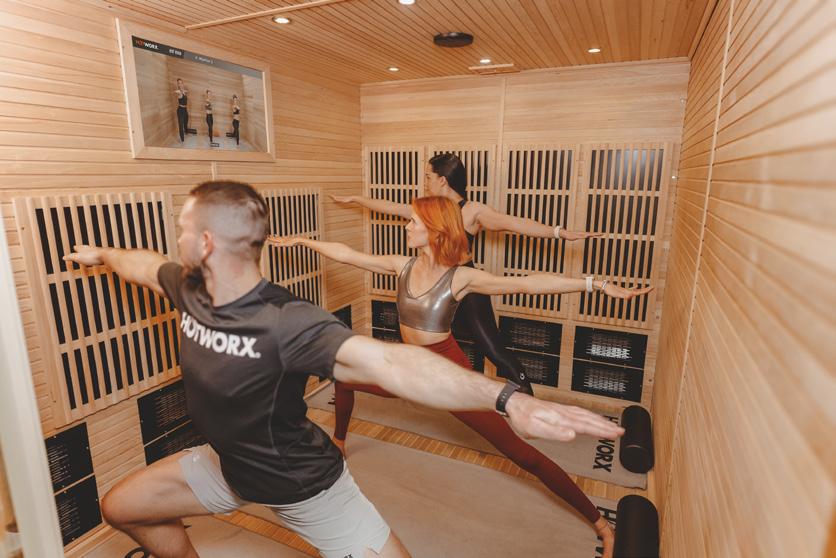







Fresh herbs are the stars of this fragrant soup. When shopping for celery, look for a bunch that has plenty of tender leaves, which add flavor and aroma to the dish.
3 Tbsp extra virgin olive oil
5 celery stalks, finely chopped (about 2 cups), leaves reserved
1 large fennel bulb, cored and finely diced (about 1½ cups), fronds finely chopped and reserved
1 medium yellow onion, finely diced (about 1 cup)
1 tsp dried oregano
1 tsp kosher salt
½ tsp freshly ground black pepper
½ tsp red pepper flakes, plus more for serving
2 large garlic cloves, thinly sliced
½ cup dry white wine or water
8 cups vegetable, chicken or beef stock
¾ cup green lentils
¾ cup fregola sarda whole-wheat orzo, or other small, whole-grain pasta
1 large bunch Italian parsley, stems finely chopped, leaves coarsely chopped (about 1 cup each)
⅓ cup fresh tarragon, finely chopped
2 Tbsp chives, finely chopped
Pecorino cheese to taste, optional Lemon wedges
Warm the oil in a medium pot over medium-low heat. Add the celery stalks, fennel bulb, onion, oregano, salt, black pepper and red pepper flakes. Cook, stirring often, for 8 to 12 minutes until the vegetables are soft.
Stir in the garlic and cook until fragrant for about 1 minute. Add the wine and cook for 2 to 4 minutes until the liquid is almost completely reduced.
Add the broth and bring soup to a boil. Reduce the heat to a gentle simmer and stir in the lentils, fregola sarda and parsley stems. Cook uncovered at a low simmer until the lentils are tender and the pasta is al dente (soft but with a chewy bite), about 20 to 30 minutes. Stir often to make sure nothing sticks to the bottom of the pot.
Just before serving, stir in the parsley and celery leaves, fennel fronds, tarragon and chives. Grate or shave Pecorino atop and serve hot with lemon wedges on the side.
Courtesy Annie Fenn
Store leftover soup in a tightly covered container in the refrigerator for up to three days or in the freezer for up to three months. The soup will thicken as it rests; add water or broth when reheating and an additional handful of fresh herbs before serving.
Recipe courtesy of Annie Fenn.

YIELD: 3 SERVINGS
1 cup old-fashioned, rolled oats
1 medium ripe banana
2 large eggs
½ cup cottage cheese (nonfat or whole), plus more for serving, optional
¼ cup water
½ cup almond, buckwheat, hazelnut or quinoa flour
¼ cup protein powder, optional
¼ cup hemp seeds, plus more for sprinkling
1 tsp baking powder
½ tsp ground cinnamon
¼ tsp kosher salt
¾ cup frozen wild blueberries (about 1 Tbsp per pancake)
Yogurt to taste, optional
Fresh berries or mashed frozen berries for toppings, optional
Pure maple syrup, warmed, optional
Extra virgin olive oil, drizzled
Place the oats in a blender until ground into a coarse flour with a texture like almond meal. Add the banana, eggs, cottage cheese and ¼ cup water and blend on high until smooth and no pieces of banana remain. Add the flour, protein powder, hemp seeds, baking powder, cinnamon and salt, in that order. Blend just until combined. Set aside while toppings are prepared.
Check the batter. If it is too thick to pour, add water 1 teaspoon at a time until it has a pourable consistency but not too thin—these should be thick, hearty pancakes.
Warm a large, nonstick skillet over medium-high heat with a drizzle of olive oil, swirling to distribute evenly. Measure ¼ cup of batter for each pancake, about three per large skillet. Scatter 1 heaping tablespoon of blueberries over each pancake, pressing slightly so they adhere. Cook until the underside is crispy and brown and the center is set, about 3 to 4 minutes. Using a rigid spatula, carefully flip the pancake and cook until golden brown on the other side and the center is dry, another 3 to 4 minutes.
Serve right away or transfer to a plate and place in the oven to keep warm. Repeat, using the remaining batter and berries. Serve hot, dollop with yogurt, a sprinkle of hemp seeds and more berries on top. Drizzle with maple syrup.
Store leftover pancake batter in an airtight container in the refrigerator for up to four days. The batter will thicken as it sits, so thin with 1 teaspoon of water at a time.
Courtesy Annie Fenn
Recipe courtesy of Annie Fenn.




YIELD: 2 SERVINGS
2 wild-caught salmon fillets
1 lb fresh asparagus, washed
2 Roma tomatoes
1 avocado, sliced
1 head butter lettuce, divided in half ½ lemon, sliced in two
Preheat the oven to 400° F.
1 to 2 cloves of fresh garlic, finely chopped
1 Tbsp fresh or dried thyme leaves Sprinkle of oregano Himalayan salt, to taste Black pepper, to taste
Extra virgin olive oil, drizzled
Place salmon in a baking dish and squeeze an even amount of lemon juice on each fillet. Season filets evenly with chopped garlic and thyme leaves. Add Himalayan salt and black pepper to taste. Drizzle with olive oil.
Bake salmon in the oven for 25 minutes.
Place asparagus on a baking sheet and drizzle about a tablespoon of olive oil on top. Add Himalayan sea salt and black pepper to taste. Roast the asparagus in the oven for 15 minutes.
Serve salmon on a bed of butter lettuce with chopped Roma tomatoes, avocado and roasted asparagus on the side.
Recipe courtesy of Dr. Kristen Willeumier.
by Marlaina Donato
Watching the days shorten at this time of year can tug at our heartstrings. Even within the delightful blush of an apple lies an undeniable wistfulness. And although summer must surrender to autumn, each falling leaf signals an opportunity to let go of a burden we’ve outgrown—a home, a relationship, a dream or a particular version of ourselves.
No matter which side of a goodbye we happen to be on, leaving can be painful. Just as the green meadow goes to seed, so does what we hold precious, but a spark of life remains in each fading blade of grass. Endings can also be blessings, even if it takes months or years before their gifts become known.
Each chapter of the year offers its own delights and wisdom, but it is our human tendency to clutch each hour for as long as possible. We can miss a harvest of joys when we only wish to taste the fruits of another season. For the ancient Celtic people, the holy time of Samhain marked the end of the harvest and the start of a new year. It was deemed a mystical time when the veil between the dead and the living grew thin, as well as an invitation to revel in some magic.
Perhaps this year we can grieve the bright transience of summer while gathering our spiritual stores. Perhaps we can relish autumn’s sweetness despite the dance of decay, inviting a new chapter, a new mindset, as nature takes back its own.


Some rites of passage for inspiration:
• Gather a small handful of sunflower or pumpkin seeds. Take each seed in hand and name something that has been lost or relinquished. Place them beneath a tree or bury them underground, inviting a new year of blessings.
• Taking inspiration from the Celts, host a Samhain celebration on Halloween night commemorating the end of summer and the beginning of winter while setting a plate and chair in honor of a loved one that has passed.
Marlaina Donato is an author, painter and composer. Connect at WildflowersAndWoodSmoke.com.
A Sanctuary for the Feminine Soul
Peaceful Pause is a Holistic Healing Space Where Every Woman Can Heal, Grow and Thrive


by Hannah Tytus
The brain has an amazing ability to rewire itself by strengthening, rerouting or growing new connections in response to learning, experience or injury. This continuous reshaping is known as neuroplasticity. The changes can be positive, such as regaining movement or speech after a stroke or learning a new skill. Sometimes they are neutral, and other times they can be harmful when maladaptive patterns reinforce chronic pain or anxiety. Fortunately, the brain can grow and adapt at any age, and there are many ways to help it thrive. Nourishing foods, mindful movement, meditation, social connection, clean air and restful sleep are everyday choices that can nurture the brain in powerful ways.
It has long been believed that children’s brains are more malleable as they grow, and that once they reach adulthood, the brain stops evolving. But new research suggests that this may not be the full story. While the brains of developing children are certainly very adaptable, the adult brain is far from fixed.

A variety of influences, including stress, hormones, neurotransmitters, growth factors, medications, environmental stimulation, learning and aging, can reshape how brain cells are built and function. These factors may trigger changes in the size or structure of brain regions, shift the brain’s chemical makeup, alter the shape of individual neurons and even rewire networks of connections, sparking the growth of new neurons in a process called neurogenesis.
Scientists have long known that injuries, chronic stress and the natural process of aging can take a toll on the brain. Yet, new discoveries in neuroscience and integrative medicine point to the remarkable potential for repair and renewal at every phase of life.
“Nutrition is the foundation of everything in health. You can’t build anything in the body without good food,” says Dr. Kat Toups, a functional medicine psychiatrist, researcher and author of Dementia Demystified: The Definitive Guide to Resurrecting Your Brain, Reversing Cognitive Decline and Regaining Your Memory. Contrary to decades of marketing campaigns for low-fat and fat-free diets, Toups explains, healthy fats are essential for brain health. The spongy white and grey matter of the brain, where all the thinking and messaging happens, is made primarily of fat.
Found in fatty fish such as salmon, sardines and mackerel, as well as in walnuts and fish oil supplements, omega-3 fatty acids are some of the healthiest fats, increasing blood flow in the brain and nourishing its physical structures to help improve learning, memory and cognitive well-being.
“The most validated ways to support neuroplasticity are exercise and meditation—and both are free,” says Toups. Exercise is well-known to protect the brain and boost thinking skills. One way it may do this is by supporting the growth of new neurons and strengthening connections within the hippocampus, an area in the brain involved

in the formation of fresh memories and the recall of past experiences. A 2017 study published in Experimental Gerontology found that regular exercise significantly increased hippocampus volume, while nonactive participants showed a shrinking hippocampus.
In addition to strength and cardio training, exercise that incorporates mindful and creative components may enrich the benefits. Engaging the body and mind at the same time can strengthen neural networks and support long-term cognitive function. Long walks, yoga classes or playful sessions with the kids or grandchildren are excellent ways to support the link between body and brain. Studies show that tai chi, a mindful movement practice, may be even more effective than regular exercise in protecting cognitive function because it increases brain activation in regions associated with motor function and focus, and is accessible to those with mobility limitations.
A regular mindfulness practice supports neuroplasticity, making it easier to regulate emotions and handle stress. A 2024 review found that regular meditation can physically reshape the brain, strengthening areas tied to focus, emotional control and self-awareness. One reason for this is meditation’s effect on a protein called brain-derived neurotrophic factor (BDNF). This molecule acts like fertilizer for brain cells, helping them grow, form new connections and remain healthy. Meditation increases BDNF, and higher levels of BDNF are linked not only to sharper
learning and memory, but also to longer lasting brain health.
Additional research has demonstrated that even a short daily meditation session can increase gray matter density in regions tied to learning, memory and emotional regulation. Over time, these changes help reduce stress reactivity and support long-term resilience. Even if formal seated meditation is not feasible, simple mindful presence can help. “I try to tell people to find small moments to come into their body, come into the moment and be present,” Toups advises. “You can do that by washing the dishes. You don’t need to sit in lotus position and chant for an hour.”
“Every time you learn something new or do a novel task, you are promoting neuroplasticity,” explains Toups. Learning new skills, from juggling to speaking a new language, produces measurable changes in brain structure, particularly in brain matter volume. These changes can occur in both early-learning phases and long-term practice, underscoring the brain’s capacity for adaptation throughout life.
Making music and dancing can strengthen connections in the brain; even the act of listening to music has been shown to enhance neural plasticity and cognitive flexibility. Toups recommends rocking out to a favorite song in the kitchen and choreographing a few dance moves.
Rapid eye movement (REM), a stage of sleep marked by increased brain activity and vivid dreaming, plays an important role in neuroplasticity. During REM, the brain actively prunes unhelpful neural connections and reinforces others, supporting brain development, the learning of new skills and memory improvement.





by Hannah Tytus
Meditate for 10 minutes. Sit down with eyes closed. Notice the breath and observe thoughts without judgment as they travel through the mind. Allow feelings of discomfort, frustration or impatience to come and go, knowing that they are part of the process that leads to increased self-awareness, enhanced emotional regulation and improved focus.
Get involved in the community. Join a crafting meet-up, group hiking excursion, dance class or volunteering event. Activities that allow us to socialize, move our bodies and learn new things are excellent for the brain.
Learn something new. Play a game, learn a new art form or read something challenging. Engaging the mind and body, such as moving our fingers while crafting, can help the brain forge new connections.

To support consistent REM sleep, aim for seven to nine hours of shuteye and try to maintain a consistent bedtime and wake time. A good night’s rest after learning a new skill or information can help that lesson integrate into the brain, supporting behavioral change.
Keeping the air in the home clean is important for overall brain health. Research suggests that mold toxicity may be a risk factor for developing Alzheimer’s disease, after researchers discovered traces of fungi inside the central nervous system of many Alzheimer’s patients—an infection that was absent in healthy individuals. Mold toxicity in the home can elicit an immune response and harm the brain. For example, a 2020 study found that black mold inhalation can cause inflammation in the hippocampus and reduce neurogenesis, the growth of new brain cells.
Practicing clean air habits can help assuage the risks of mold exposure at home. These include investing in an air purifier, ventilating regularly by opening windows, using exhaust fans and maintaining household ducts. Mold concerns can be investigated with a simple at-home testing kit, followed by professional testing and remediation, if needed.

mitochondria actually release growth factors, which support growth of new cells in the brain,” Lim explains.
According to Lim, PBM may help the brain protect and repair its neurons, encourage the growth of new connections and support the clearing of harmful waste proteins linked to cognitive decline. He asserts that certain light pulse frequencies, such as 40 hertz, may also help tune brainwave patterns that are important for memory and learning. While most research so far has been in small human studies or animal models, the results suggest that regular PBM could strengthen the brain’s natural ability to adapt and rewire itself. Some people use PBM as part of a daily routine to keep their minds sharp, while others use it to heal from more serious brain injuries.
The brain is a living, adapting system that can grow stronger, sharper and more resilient at any age, and we can guide those changes.
“Photobiomodulation is a powerful way to create neuroplasticity, both quickly and over the long term,” says Dr. Lew Lim, founder of the Vielight photobiomodulation (PBM) device, which has been studied in collaboration with universities and medical institutions, including the University of Toronto, Harvard Medical School and Mount Sinai Hospital.
PBM, also called light therapy, uses gentle red or near-infrared light to stimulate brain cells, boost the energy-producing parts of cells known as mitochondria, improve blood flow and calm inflammation. “When we activate the mitochondria with PBM, the
Research shows that staying connected to others offers powerful protection for the brain. Older adults that feel lonely or spend long stretches without social contact face about a 50 percent higher risk of developing dementia, including Alzheimer’s disease, even when other health factors are taken into account. One long-term study found that memory and thinking skills declined 20 percent faster in those that reported feeling lonely.
Being socially active can help guard the brain against decline. For 25 years, the Northwestern University SuperAging Program has studied people in their 80s and beyond with nimble minds that work as
well as people decades younger. Brain scans show that these study participants called SuperAgers do not exhibit the usual thinning of the brain’s outer layer normally seen with age, and one key area involved in attention and decision-making is thicker than even in middle-aged adults.
Under the microscope, SuperAger brain cells are larger, better connected and show fewer signs of Alzheimer’s damage or inflammation. These resilient individuals tend to be very social, valuing close relationships and staying engaged with others—habits that may work hand-in-hand with their unusually healthy brain structures to help protect thinking skills late in life.
Even a weekly coffee with a friend or joining a class can be powerful brain fuel. People with rich social lives, including those that regularly share time with friends, family and communities, tend to keep their minds sharper for longer.
The brain is never truly fixed. It is a living, adapting system that can grow stronger, sharper and more resilient at any age, and we can guide those changes. Whether through movement, nutrition, light therapy, meditation or meaningful connection, every choice we make can help shape and rewire the mind for the better. The science is clear: it is never too late to nurture the brain’s potential. Embrace neuroplasticity as a lifelong journey and let each new day be an opportunity to learn, adapt and thrive.
Hannah Tytus is an integrative health coach, researcher and former writer at the National Institutes of Health. She also hosts “Root Shock”, a podcast exploring how cultural and systemic forces shape our understanding of health.


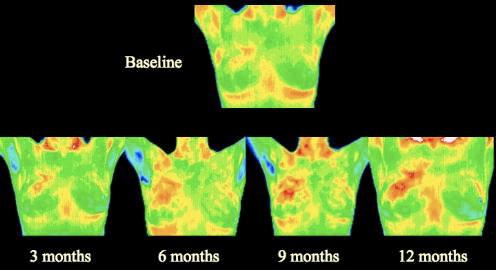
I
—Maya Angelou



by Jordan Peschek, RN-BSN
Menopause marks a significant transition in a woman’s life, bringing with it numerous physiological changes that can affect health, mobility and quality of life. Among these changes, declines in muscle mass, bone density and balance present particular challenges. Research suggests that resistance training is a safe and effective strategy to counteract these effects.
For women navigating perimenopause and menopause, it is not just a savvy fitness choice, but a crucial intervention to improve strength, balance, lean muscle mass and bone health, thereby reducing the risk of falls and injuries while supporting healthy aging.
Perimenopause can last for two to 10 years leading up to menopause, which is officially marked by 12 months without a menstrual period. Menopause typically occurs between the ages of 45 and 55 and involves a natural decline in estrogen production. This hormonal shift accelerates loss of muscle mass (sarcopenia) and bone density (osteopenia or osteoporosis), both of which are critical factors for maintaining physical function and preventing injury.

“Once in menopause, we lose muscle and bone mass at a faster rate, so strength training helps counteract that loss,” explains Dr. Brenda Heinecke, physical therapist and pelvic floor specialist based in Milwaukee, Wisconsin. Muscle weakness and decreased balance increase the risk of falls, a leading cause of injury in older adults, while reductions in lean body mass slow metabolism and contribute to weight gain.
Resistance training, also known as strength training, involves exercises that cause muscles to contract against an external force such as weights, resistance bands or body weight. Unlike aerobic exercise, which primarily benefits cardiovascular health, resistance training specifically targets muscle and bone strength.
A 2023 systematic review of 12 randomized controlled trials involving more than 800 women, published in the Journal of Clinical Medicine, reported that resistance training improved musculoskeletal health in menopausal women, highlighting its positive effects on muscle mass, bone density and functional outcomes like balance and mobility.
The authors noted that resistance training could effectively combat the muscle and bone loss accelerated by menopause, contributing to better overall health and reduced risk of fractures. They also found strength training to be positively associated with hormonal and metabolic improvements in menopausal women, including stabilized blood pressure and a reduction of hot flashes compared to inactive women in the studies.
The hips play a vital role in balance and mobility, but hip strength diminishes significantly during menopause, affecting gait stability and increasing the likelihood of falls. A 2023 article in the Iranian Journal of Public Health reported on a Korean study of postmenopausal women that performed a variety of resistance exercises to target the large muscle groups of the lower body, including a band lateral walk, one-leg deadlift, side-lying hip abduction and squat deceleration, over the span of four weeks. The group that performed these resistance exercises significantly improved their gluteal muscle strength.
Menopause-related declines in estrogen also contribute to reductions in lean body mass and increases in fat mass, which can negatively impact metabolism, insulin sensitivity and cardiovascular health. “Strength training not only helps increase muscle and bone mass, but it helps with other common issues of menopause such as cardiovascular disease; insulin resistance; and impairments to mood, cognitive function and sexual health,” Heinecke remarks.

Resistance training helps to preserve and increase lean muscle mass, which in turn supports a healthy metabolic rate and reduced risk of type 2 diabetes.
A 2023 BMC Women’s Health study of premenopausal women highlights that maintaining lean body mass through resistance exercise helps mitigate common menopausal symptoms such as weight gain and fat redistribution.
Balance naturally deteriorates with age due to changes in the nervous system and muscle function. The 2023 review in Journal of Clinical Medicine reinforces that resistance training not only strengthens muscles, but also improves neuromuscular coordination, which is critical for maintaining balance and preventing falls. Exercises such as squats, lunges and step-ups challenge
both strength and balance systems, making them ideal components of a menopausal fitness program.
Given its benefits, resistance training should be a cornerstone of menopausal health routines. However, many women may feel uncertain about how to begin or fear injury.
“My personal recommendation would be to join a fitness class or hire a personal trainer for a few sessions,” shares Victoria Morse, a certified fitness instructor in Kona, Hawaii. “For most people, lasting change can be hard to achieve alone—they need accountability. Once we accept this truth, our chance of success increases dramatically.”
For those that are ready to add strength training to their routine, begin with light resistance and focus on proper technique, gradually increasing weight or resistance as strength improves. Aim for two to three sessions per week, targeting major muscle groups with these exercises:
• Squats, lunges and step-ups for lower body and hip strength
• Push-ups or chest presses for upper body

• Rows and shoulder presses for back and shoulders
• Core stabilization exercises such as planks or medicine ball rotations
Menopause introduces complex challenges, but resistance training offers a scientifically supported solution to some of the most significant concerns: loss of hip strength, balance and lean body mass. For women facing menopause, lifting weights or using resistance bands is more than just a fitness trend; it is an essential strategy to maintain mobility, independence and vitality for years to come.
Jordan Peschek has a background in personal training, yoga instruction and mental health nursing. She publishes the Milwaukee and Twin Cities editions of Natural Awakenings.



by Christina Connors
Temper tantrums, bedtime battles and outsized feelings may occasionally overwhelm a toddler. Although such outbursts are a normal part of growing up, they represent a child’s attempt to work through and communicate their emotions. Whether these episodes happen at home or in the shopping mall, it can certainly feel uncomfortable for the child, the parents and nearby witnesses.
Mindfulness practices designed for toddlers can help little ones navigate unsettling feelings and situational challenges while supporting their developing brains. Rambunctious youngsters may not be able to sit still and meditate yet, but they will likely engage in games and activities that strategically teach emotional regulation skills.

A 2024 randomized study published in Cerebral Cortex reveals just how powerful mindfulness can be for developing brains. After analyzing brain imaging from 68 participating children, the researchers discovered that the kids that engaged in mindfulness activities exhibited measurable positive impacts in completing executive-function tasks and were better behaved than the control group.
“This research matters because during the toddler years, the brain is rapidly forming connections, especially in areas related to emotional regulation, attention and empathy,” says Dr. Yasmine Saad, a psychologist and founder of Madison Park Psychological Services, in New York City. “Mindfulness strengthens these neural pathways. When toddlers pause to notice their breath or sensations, they’re practicing self-awareness and impulse control, skills that form the foundation for emotional intelligence later in life.”
Forget about sitting cross-legged in silence. Mindfulness for toddlers is about creating moments of awareness through their natural language of play. Moments of presence can be sprinkled into a child’s day by prompting them to notice their breath during a fun game, guiding them to recognize emotions through storytelling and building body awareness with movement.
“When it comes to teaching mindfulness and presence with young children, it is about connection, not perfection,” says Lee Sowles, founder and CEO of Kind Mind, a company that provides social-emotional learning curriculums for early childhood and elementary-aged children (ages 0 to 12 years). “We encourage a model-to-teach approach, so practicing yourself—in moments of chaos, triggers and calm—is the best way to teach and guide your children to develop healthy regulation strategies.” Sowles shares these simple techniques:

• Listening Games: Have toddlers close their eyes and identify different sounds around them, both inside and outside the room. Surprise them by asking if they can hear sounds inside their own bodies.
• Texture Exploration: To develop mindful touching, ask kids to close their eyes and then place various items in their hands, prompting them to identify what those trinkets and textures are. Another fun game is to have kids rub their hands together really fast, then stop. Ask them to describe what they feel, offering suggestions such as heat, tingling or coolness.
• Calm Down Jars: Fill a clear jar about three-quarters full with warm water; stir in two tablespoons of clear glue and one to two teaspoons of eco-friendly glitter. Top off with warm water, leaving a little space at the top, and close with a water-tight lid. Toddlers can shake the jar and watch the glitter settle. This is a wonderful way
to visually illustrate the process of calming down.
• Breathing Buddies: To help young children feel their breath moving, place a stuffed animal on their belly while they are in a reclined position. Invite them to take deep breaths and ask them to describe what is happening to their beloved toy as they breathe in and out.
• Slow-Motion Walking: Practice walking as slowly and deliberately as possible, and have the toddlers notice every movement. Do they feel the floor under their bare feet? Can they hear their knees?
• Body Awareness: Guide children to tighten and relax different parts of their bodies, head to toe. For example, ask them to scrunch their faces tightly for three seconds, then relax, feeling the muscles melting.
When toddlers learn these early mindfulness skills, the benefits extend to the entire family. Parents report feeling more confident when handling challenging behaviors, and siblings often naturally imitate the techniques.


Mindfulness can be woven into daily activities or mundane chores. “Turn waiting in line into a what-do-you-see-and-hear game,” Saad suggests. “Make toothbrushing a chance to notice tastes and sensations. Even a one-minute pause before meals to take a breath and say something you’re grateful for can help a child’s brain and body learn to reset. Small, consistent moments are what create lasting habits.”
Begin with 30- to 60-second activities and gradually increase the duration as toddlers develop their attention span. All of the mindfulness activities should feel playful— like games, rather than formal meditation. Remember to model the behavior. Toddlers learn best through imitation. Be consistent. Regular practice, even if it involves brief moments, is more effective than longer, infrequent sessions. Follow the child’s lead. If a toddler is not responding to one technique, try another. Every child is unique and will connect with their preferred activities. Test them out and have fun with them.
Christina Connors is a writer, keynote singer and head of music and social-emotional learning integration for the Kind Mind Education Program. Learn more at Christina Connors.com.
by Ruth Roberts, DVM, CVA, CVH, CVFT, NAN
Advancements in technology are improving the daily lives of pets and their people. From collars equipped with global positioning systems (GPS) to wearable devices that monitor behavior and detect potential health shifts, these innovations are transforming the way we interact with our animal companions. Before embracing smart devices, however, pet parents should be informed about their potential benefits and limitations.
GPS trackers attached to pet collars are gaining popularity, especially for active or escape-prone animals. Using satellite or cellular signals to continuously monitor a pet’s location, these devices help pet owners quickly locate stray companions.
A 2021 study conducted at the University of Veterinary Medicine, Vienna, revealed that the radiation exposure experienced by pets from GPS and Bluetooth devices is well below international safety standards, implying that adverse health effects are unlikely. The study also noted that adjusting how often a tracking device sends location data can influence a pet’s exposure to radiofrequency electromagnetic fields (RF-EMF). For example, some devices transmit only every few hours when the pet is resting, but switch to every minute or every few seconds during periods of high activity. To further minimize RF-EMF exposure, the researchers recommend using a harness-mounted tracking device instead of a collar-mounted one.

In addition to GPS technology, microchips can serve as a reliable backup identification method. A microchip is a permanent form of identification implanted under the pet’s skin, usually between the shoulder blades. It cannot track a pet’s real-time location but stores a unique number linked to the owner’s contact details. If scanned at a clinic or shelter, it can help reunite lost pets with their owners.
Although they do not replace veterinary care, health trackers can support early intervention and informed veterinary conversations. Certain devices monitor behaviors such as scratching, licking, shaking, sleeping and resting. They compare this data to the pet’s usual habits or population averages. Sudden changes may indicate discomfort and prompt further attention. Data from health trackers helps veterinarians and pet parents confirm concerns about allergies, anxiety or appetite changes.
These devices can be useful in busy or multi-pet homes. Owners may miss subtle changes, whereas trackers are capable of detecting them. The historical data can help veterinarians see patterns over time. Still, the data needs context, as not every change signals an illness. Environmental shifts, routine disruptions or the natural progression of aging can also impact an animal’s behavior. Trackers flag what is different, but they do not explain why.
While pet health trackers can provide valuable behavioral insights, metabolic estimates such as calorie burn should be interpreted with caution. A 2023 study published by AVMA Publications evaluated the accuracy of a popular dog activity monitor. The study of 23 healthy dogs over a 28-day period found that the monitor failed to accurately measure the dogs’ calorie expenditures. Notably, the device overestimated the calorie needs of most of the dogs, even when their body weights remained stable throughout the study period. While these devices can be useful for tracking trends and identifying changes, pet owners should exercise caution when using them to make dietary decisions.
Feeding routines are crucial components of many pet health plans, particularly for animals experiencing food sensitivities, chronic illness or weight concerns. Smart feeders can automate portion

control, meal timing and consistency. For veterinarian-guided weight-loss plans that rely on controlled food and calories intake, it is imperative to select devices that can deliver multiple daily feedings in precise, small portions. Most smart feeders work well for dry kibble. Some models feature sealed trays, microchip-activated lids or cooling compartments, making them suitable for wet or home-cooked meals.
Smart feeders can help maintain consistency and promote healthy habits but should not be considered standalone solutions for diet-related health concerns. They are most effective when integrated into a clinical feeding plan under the guidance of a veterinarian. This approach ensures that calorie needs are met, a healthy weight is maintained and potential dietary risks are minimized.
Smart pet technology can provide valuable insights into a pet’s daily habits, but it is essential to understand its limitations. These devices are not diagnostic tools. They cannot test for allergens, run lab work or evaluate physical symptoms. Their primary function is to serve as early warning systems, flagging subtle changes that pet parents might otherwise miss. It is important to refrain from solely relying on technology. Misinterpreting data can lead to unnecessary worry or delayed medical attention. Real observation and professional input remain indispensable.
Ruth Roberts is an integrative veterinarian and a holistic health coach for pets, as well as the creator of The Original CrockPet Diet. Learn more at DrRuthRoberts.com.





Dressing up for Halloween is a fun way for kids and adults to express themselves, try on new personalities or celebrate their favorite movie characters, but the merriment may come with a hefty environmental price tag. Too many of us buy ready-made, fast-fashion costumes, wear them once and throw them away. Store-bought costumes tend to be made with unsustainable materials such as plastic and polyester, which can take hundreds of years to decompose in landfills, causing harmful microplastics to enter our waterways.
The eco-friendly alternative is to create a costume from items we already have or will use again. That means ditching the plastic, glitter and chemical-laden makeup. It is an opportunity to dial up our creativity and doit-yourself spirit.
• Check the closet, thrift stores and online marketplaces. Outgrown clothes can be


repurposed for a unique boho or witchy look. Layer items in unexpected combinations to make everyday garments take on new personalities. Mix colors. Add a vest. Tie a scarf around the head. Wear multiple hats and mismatched belts.
• Go natural for makeup or effects. Choose eco-friendly paints or natural dyes, including black tea, coffee, turmeric and paprika to color fabrics or decorate handmade, creative costumes. For witchy green skin, slather on a face mask. For rosy cheeks and lips, use a slice of beet to stain the skin. Blend vibrant, shimmery mineral powders for eyes, face or lips. Use eco-friendly face paint kits, such as those available at NaturalEarthPaint.com
• Use household items. Cardboard boxes embellished with foil scraps and reused lids make great robots, astronauts or knights in armor. A white sheet with
cut-out eyes is the quintessential ghost. Blankets and shower curtains can be fashioned into superhero capes.
• Swap or borrow. Get together with family and friends and choose from a pile of costumes from years gone by. Have fun tweaking them and making them new again.
• Handcraft a mask. Gather leaves, flowers, pinecones, feathers, acorns and other natural specimens, as well as paper bags, recycled paper, felt fabric and cardboard. Make a sturdy shape for the base of the mask and cut out an oval for the eyes, then glue the decorative elements. This is a great craft project for kids.
• Garden or Forest Fairy: Wear practice clothing from dance class and layer it with colorful scarves, fake plants, leaves and flowers. Cut wings out of poster board.
• Mother Nature: Wear something green and make a crown from pinecones, sticks or leaves.
• Bat or Owl: Make wings from an old umbrella and use fabric scraps for feathers.















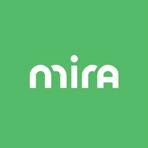




































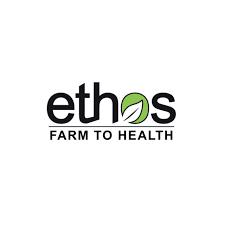
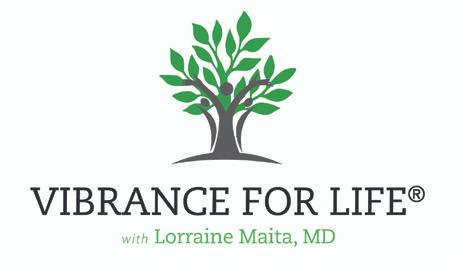


















To place a calendar/ongoing/classified event, email content to MsTracy@MidlandsNA.com. Entries must adhere to our guidelines and be submitted by October 10 (for November issue). Call ahead before attending events to avoid any cancellations or changes.
WEDNESDAY, OCTOBER
1 – FRIDAY, OCTOBER 30
Orthofeet Shoe Sale–10am-5pm. $25 off all Orthofeet brand. Foot Savi is your number one place for healthy feet. We are more than a shoe store; we are a medical boutique that meets all of your sole’s needs. 7001 St Andrews Rd, Columbia. Info: 803-781-1230.
WEDNESDAY, OCTOBER 1, 15 and 29
Spiritual Book Group–3pm. Celtic Wisdom Center invites you for their in-person book group, sessions two, three and four. The book for this month is Listening for the Heartbeat of God by J. Phillip Newell. This is a four-week group. Cost: $40. Info/register/location: Call Edwina at 303-803-6289.
SATURDAY, OCTOBER 4
Dream Group–10am-noon. Celtic Wisdom Center invites you to join their in-person dream group. Explore your dream world and the hidden messages in dreams. Cost: $15. Info/register/location: Call Edwina at 303-8036289.
THURSDAY, OCTOBER 9
Virtual Contemplative Prayer Service–7pm. Celtic Wisdom Center invites you to join us for some virtual contemplative community time. This is a nontraditional guided service featuring prayer, poetry and reflection. Donations appreciated. Info/register/Zoom link: Call Edwina at 303-803-6289.
SATURDAY, OCTOBER 11
Level 2 Herbal Class–9am. The GROW Farm invites you to learn about five valuable and specific herbs. Make tinctures and herbs with them. Registration will open the first week in October. Cost: $20. 216 Singleton Dr, Columbia. Info/register: JoyfulSoulsNursery.com.
SUNDAY, OCTOBER 12
Holistic Professionals of Color–11amnoon. Join a professional group of holistic professionals in the Columbia area. Learn more about our monthly initiatives and help address disparities in Black, Indigenous and People of Color (BIPOC) health outcomes. Peaceful Pause Healing, 7825 Broad River Rd, Ste 300, Irmo. Info: PeacefulPauseHealing.com.
Reiki Bloom Circle–1-3pm. This is for reiki practitioners that want to stay rooted in their practice. We come together in community to share, ask questions and offer reiki in a gentle and supportive space. Cost: $22. Peaceful Pause Healing, 7825 Broad River Rd, Ste 300, Irmo. Info: PeacefulPauseHealing.com.
THURSDAY, OCTOBER 16
In-Person Celtic Service–7pm. Celtic Wisdom Center invites you to join their InPerson Celtic Service at Unitarian Universalist Church. Donations appreciated. 2701 Heywood St, Columbia. Info: Call Edwina at 303-803-6289.
FRIDAY, OCTOBER 17
Drew Book Club–5:30pm. Join us every third Friday of the month for our wellness book club at Drew Wellness Center meeting room. The book is Atomic Habits by James Clear. Limited quantities of the book are on hold at Lexington Public Library. Please bring a whole-food, plant-derived dish to share (optional). Free. Register at the front desk. 2101 Walker Solomon Way, Columbia. Info/ register: 803-545-3200.
Sunday Jazz Brunch–Noon-3pm. Every Sunday. Chayz Lounge invites you to enjoy an elevated brunch experience. Reservations required; must be 21 and older. There is no cover charge. Chayz Lounge, 607 Meeting St, W Columbia. Info: 803-563-8375, ChayzLounge.com.
Arboretum Open House–1-4pm. Every third Sunday. Come and enjoy a nature walk through the W. Gordon Belser Arboretum, a wildlife preserve in the heart of Columbia. Pets are not permitted. Pathways are natural and pass through hilly terrain. Restroom facilities are not available. Free admission. W. Gordon Belser Arboretum, 4080 Bloomwood Rd, Columbia. Info: Arboretu@mailbox. sc.edu.
Virtual Healthy Living Support Group –7pm. Every third Sunday. Virtual support group via Zoom. Uplift, support and encourage one another while making necessary changes for better health and wellness. Info/ register: Contact Ms. Tracy at 839-228-1158 or OriginalOriginshw@gmail.com.
Grief Support Group –1-2pm. Every second and fourth Monday. Connect with others that have experienced loss and the challenges that living with grief brings. Free. Leeza’s Care Connection, 201 St Andrews Rd, Columbia. Info: 803-888-7525, LeezasCareConnection.org.
Tuesday
Survivors of Suicide Loss (SOS) –7-8:30pm. Every first Tuesday of the month. This is a peer-led group, not a place for someone that is in crisis of suicide. If you are in crisis, call or text 988 or text TALK to 741741. Westminster Presbyterian Church, 1715 Broad River Rd, Columbia. Info: 803-622-1512, SOSColumbiaSC@gmail.com.
SATURDAY, OCTOBER 18
Church of the Wild–9am. Celtic Wisdom Center invites you for an easy wander (stroll and guided reflection) to share a communal encounter with the sacred in nature. Moore Park, 7507 Eastview Dr, Irmo. Cost/info/ register: Call Edwina at 303-803-6289.
SUNDAY, OCTOBER 26
Pink Pranayama–11am-2:30pm. Join us at Doko Meadows for a Pinktober breast cancer wellness event. We will have yoga, sound therapy, raffle giveaways and more. Guest speaker is Dr. Colletta Orr, a breast and ovarian cancer research scientist. 171 Langford Rd, Blythewood. Cost/info/register: Eventbrite.com.
Early-Stage Dementia Support Group–12pm. Every third Thursday. In-person and virtual. This group is for caregivers and families adjusting to a new diagnosis of some form of dementia. Free. Leeza’s Care Connection, 201 St Andrews Rd, Columbia. Info: 803-888-7525, LeezasCareConnection.org.
Art W/ Coping of Loss–6:30-8pm. Every fourth Thursday. Dr. Delores Gulledge teaches to use art as medicine when dealing with loss and grief. No experience required. Free. Leeza’s Care Connection, 201 St Andrews Rd, Columbia. Info: 803-888-7525, LeezasCareConnection.org.
Palmetto Trivia–7-9pm. Every Thursday. Teams compete for prizes awarded to the top three finishers. Trivia takes place outside in pleasant weather and moves indoors to the Bierkeller hall during inclement conditions. Free parking is available in the deck on Canalside Street. The Bierkeller, 600 Canalside St, Ste 1009, Columbia. Info/cost: BierkellerColumbia.com.
Thursday Night Jazz Party–8-11pm. Every Thursday. The Aristocrat hosts a Thursday Night Jazz Party featuring various artists and musicians. Guest musicians welcome to join in. Free admission. The Aristocrat, 1001 Washington St, Columbia. Info: ExperienceColumbiaSC.com/event/jazzparty-at-the-aristocrat/68104.
Saturday
B.I.O.M.G.–10-10:40am. Every Saturday. Join The Village parent support group virtually. This support group is for all parents. Being a parent can be challenging. You have a village to help you maneuver through tough times. Free. Info: Contact Rashika “Ro” Davis at 803550-9837 or BlackIceomg@gmail.com.
Connecting you to the leaders in natural health care and green living in our community. To find out how you can be included in the Community Resource Guide, call 839-228-1158 or email MsTracy@MidlandsNA.com.
DOWDY RUDOLPH CHIROPRACTIC
LLC
Dr. Dowdy Rudolph, DC 1444 Barnwell St, Columbia 803-376-6293 • DowdyRudolphChiro.com

Dr. Gerald Rudolph, DC, focuses on finding the root cause of your problems and not just treating your pain. He utilizes digital X-rays to help diagnose problems, spinal adjustments to stimulate proper movement of spinal and extremity joints, active therapeutic movement exercises to correct movement disorders, and spinal decompression to help relieve numbness and tingling down your arms and legs. Dowdy Rudolph Chiropractic also offers a state-of-the-art full-body lounge hydromassage table that can help you feel more rejuvenated and relaxed. See ad, page 29.
SPRING RAIN HYDROTHERAPY
Linda Salyer
120 Kaminer Way Pkwy, Ste H, Columbia 803-361-2620 • LSalyer@ymail.com

All disease begins in the colon. Constipation; slow, sluggish bowel; gas and bloating? A colonic will help to rid you of these problems. Colonics promote good digestion, help speed metabolism, help lower cholesterol, and help relieve joint pain. Linda Salyer is IACN certified and a retired nurse. Saturday appointments available with an additional small convenience fee. See ad, page 19.
ABUNDANCE MANIFESTOR
Patricia Whyte
PatriciaWhyte.com

Do you often ask yourself, “Why am I not moving forward with all I am doing?” Does your life feel unmanageable or out of control? Is your physical space— and your mind—cluttered? Patricia is a global transformational leader and an expert in energy movement and manifesting. She is a certified Diamond Life Coach and Diamond certified in Feng Shui.
Feng Shui is the art of creating a harmonious and balanced environment by optimizing the flow of energy within a space. Many people feel stuck or overwhelmed in their careers, relationships or health. Clutter and disorganization are often part of the problem. Patricia offers a solution to help you move forward and live the life you deserve. Let her help you find your personal key to unlock your true potential and create a life filled with abundance, joy and boundless possibilities.
THE SHIFTING SAND
Juanita Ecker
518-941-9249
Juanita@TheShiftingSand.com TheShiftingSand.com

Are you tired of turning to food to numb your feelings and finding comfort at the bottom of a snack bowl? Transform your relationship with food and stress. Stress eating isn’t about weakness—it’s about trapped emotions from past experiences that drive you to seek comfort in food. Juanita uses a gentle energy healing technique to identify and release emotional blocks, helping you break free from unhealthy patterns. Together, you’ll create lasting change—without shame or rigid rules. Life’s pressures don’t have to lead to the pantry. Your journey to overcoming stress eating starts here.
PEACEFUL PAUSE HEALING
Dr. Malai Roper
803-814-4001
DrMalai@PeacefulPauseHealing.com PeacefulPauseHealing.com

Dr. Malai Roper is a metaphysician and holistic wellness guide offering therapies that honor the body, mind and spirit. She blends Reiki, sound therapy, Ayurvedic wellness and metaphysical guidance into personalized experiences for women seeking balance and renewal. Her work creates a safe and sacred space for feminine healing, supporting rest, release and reconnection with inner wisdom. Through bodywork, energy medicine and spiritual mentorship, Dr. Malai helps women reclaim their vitality and align with their true essence. She also offers certification trainings in Reiki and Sound Healing for those called to deepen their own path. See ad, page 19.
PRIMERICA FINANCIAL ADVISOR
Hannah Tucker 803-427-8742
HannahTucker@Primerica.com
TherealHowMoneyWorks.com/us/ teamtucker

True wellness is not just physical—it includes financial peace of mind. Hannah Tucker helps individuals and families create stress-free financial plans that promote security, stability and long-term wealth. Through free consultations and financial plans, Hannah provides guidance on eliminating debt, protecting your income, growing your assets, and planning for a secure retirement—without financial strain. A solid financial foundation leads to a healthier, more balanced life. Let us create a plan that supports your overall well-being. Call Hannah to book your free consultation and unlock your path to wealth, peace and financial independence.
FOOT SAVI
7001 St Andrews Rd, Ste A Certified Board Pedorthist and Brace Specialist 803-781-1230 • FootSavi.com

With more than 30-plus years in the footcare/footwear industry, Sion Owen helps with a variety of issues, including gait analysis, foot assessments, custom orthotics, bracing and compression therapy, plantar fascia pain, neuropathy and fitting for therapeutic shoes for patients with diabetes, arthritis, painful bunions, callouses and hammer toes. Call to schedule an appointment! See ad, page 21.
GRIEF AND BEREAVEMENT RESOURCE CENTER INC
Sylvia Grant, MSW, BSW, GC-C 140 Stoneridge Dr, Ste 430, Columbia 803-606-3032 (text) or 803-386-9069 (call)
Info@GriefAndBereavementrc.org GriefAndBereavementrc.org

The Grief and Bereavement Resource Center, founded by Army veteran Sylvia Grant, MSW, provides compassionate support, counseling and educational resources to help individuals and families navigate loss. Rooted in community care, the center empowers people to process grief, find healing, and thrive through shared support and professional guidance. It’s time to stop hurting and start healing. You don’t have to do it alone. Call to make an appointment today.
ESNTL HEADSHOTS
Michael Woodland 1421 Calhoun St, Columbia 803-237-2536 • Michael@ESNTLHeadshots.com ESNTLHeadshots.com

Make a powerful first impression with ESNTL Headshots. ESNTL Headshots, the Midlands’ leader in professional photography, captures images that define your success. We specialize in corporate headshots and branding photography. Our corporate headshots provide polished, professional images for executives, teams and company profiles. Our branding photography provides dynamic shots for entrepreneurs, showcasing your personality and elevating your brand. We have options to bring the studio to you, delivering high-quality images that leave a lasting impact. Book today to level up your success.
120 Kaminer Way Pkwy, Ste J, Columbia 803-798-8687 • AboutYourHealthSC.com

About Your Health Inc’s main focus is health education and health-enhancing services, including One-on-One Nutritional Counseling, Live/Dry Blood Cell Observation, Mild Hyperbaric Chamber, Ozone Therapies, Thermography, Aqua-chi Footbath, Far Infrared Sauna and more. They also carry hardto-find natural, organic, whole-food nutritional supplements and products. See ad, page 23.
Tracy R. Jacox • 833-678-7229
OriginalOriginshw@gmail.com OriginalOriginshw.com

Ms. Tracy has over 30 years of experience in the medical field. Original Origins can assist you with maximizing your health and wellness holistically! Our wide range of services include health coach partnering, comprehensive health evaluations, comprehensive cooking experiences, and a comprehensive kitchen evaluation. Your health is your wealth! See ad, page 3.
Donna Mack
803-766-4913
PositiveProjectionsllc@gmail.com
PositiveProjectionsllc.com
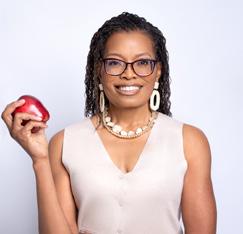
Donna Mack and her team bring over 30 years of combined experience in offering health and wellness classes. Our courses are designed to empower participants to live their healthiest and happiest lives as they age. We’ve seen firsthand how gaining greater understanding of health impacts and making simple changes in lifestyles can lead to real healing. We offer a signature Healthy Body Health class to provide you with an “owner’s manual” for your body, offering practical tools and a personalized plan to help you take charge of maintaining your health for a lifetime. Call to make an appointment today.
SPHINX PAW
3400 Two Notch Rd, Columbia 803-754-3922
SphinxPaw.com

Discover a haven for holistic well-being at Sphinx Paw. Sphinx Paw has been at the forefront of healing in the Columbia area since 2007. We offer a diverse selection of herbs, books, candles and incense to support natural detoxification, personal healing and spiritual growth. Embrace your wellness journey with our thoughtfully chosen products and expert guidance. Our distinctive resources promote holistic self-care, natural detoxification, weight loss, personal healing, and spiritual growth throughout all phases of life. Sphinx Paw has everything you need to support you in a life of health excellence and well-being.
EXPECT WELLNESS
Dr. Rachel Hall
You must learn a new way to think before you can master a new way to be.
—Marianne Williamson

130 Suber Rd, Columbia 803-796-1702 • DrRachelHall.com reception@drrachelhall.com Find us on Facebook for great health tips. Integrative/Holistic medicine consults for anyone wanting to approach their health more naturally. Dr. Rachel Hall is board certified in both family medicine and integrative holistic medicine. Together we will focus on finding the root of the problem, not just treating symptoms. Call today for a consult if you are looking to achieve balance. In-house diagnostic labs and therapies. See ad, page 5.
JOY LEE CONNOR
Healing Minster at Springhill AtONEment Center 803-447-6499
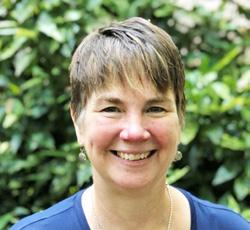
Joy has more than 30 years of experience in energy and bodywork. She teaches Reiki, Touch for Health, Meditation, Yoga, Ayurveda and A Course in Miracles. Joy welcomes and sees clients who are ready to shed guilt and limitations in favor of forgiveness and freedom. One hundred acres of trees surround this pristine location for healing at Springhill AtONEment Center. Nature walks and fireside gatherings available. Contact Joy at 803-447-6499.
JAN SHAW PERSONAL TRAINING & MASSAGE (MAS1935)
806 12th St, West Columbia 803-360-7895 • JanShawHealth.com

Jan Shaw has many years of experience in exercise physiology and massage. She specializes in the John F. Barnes method of Myofascial Release Therapy; holds an M.S. in Exercise Science; has worked in rehab medicine for 10 years re-training patients with a myriad of physical injuries; and is skilled in MFR 1, 2, Unwinding, SES and Cervicothoracic. Whatever your needs, Shaw has the education and experience to help you.
GARNER’S NATURAL LIFE
4840 Forest Dr, Ste 15-A, Columbia 803-454-7700
5166 Sunset Blvd, Ste C, Lexington 803-973-3001
GarnersNaturalLife.com

Garners Natural Life is a locally and family-owned natural health store that has been a staple in the community for decades. Improve your health with the purest, most innovative high-quality natural products, including vitamins, herbal supplements and aromatherapy. Their newest product, GLP1 Pro, is a probiotic blend that supports healthy weight management and helps curb food cravings. They also offer a full line of chemical-free shampoos, conditioners and natural soaps. Take your health somewhere it’s never been—visit one of their local locations today. See ad, back page.
PROSPER AND THRIVE PELVIC HEALTH AND WELLNESS
Dr. Kelsey Stegall
120 Sparkleberry Crossing Rd, Columbia 803-250-1836
Kelsey@ProsperAndThrive.co ProsperAndThrive.co

Dr. Kelsey Stegall is a Board-Certified Clinical Specialist in Women’s Health Physical Therapy. Pelvic floor therapy strengthens muscles supporting the bladder, bowels and reproductive organs in men and women. Dr. Kelsey assists men and women in improving bladder and bowel control, as well as enhancing sexual function. Her therapy techniques help women improve recovery after childbirth and gynecological procedures, and she also assists men in improving recovery after prostate surgery and men with pelvic pain and dysfunction. You deserve a life that is leakage- and pain-free during exercise and intimacy. Book a consultation with Dr. Kelsey to discuss how you can experience a patient-centered, full-body approach to true wellness and reclaim your life.
LUVEVA AESTHETICS SPA
Eva Rigney, RN
Certified Esthetician 630-17 Promenade Pl, Ste 401, Columbia LuvevaSpa.GlossGenius.com

Eva Rigney is an Aesthetic Nurse and an Army Veteran. She has been in the medical field for more than 20 years and focuses on her lifelong passion of skin care. She incorporates updated and newest innovations in esthetics, such as permanent makeup (PMU), including 3D areola, Botox and more. She enjoys providing facial and body treatments, along with advanced techniques. She shares her knowledge on skin care, and assists with recommendations of the Luveva skin care line. “My goal is to help everyone achieve revitalized healthy skin,” she says. See ad, page 18.
CELTIC WISDOM CENTER
Edwina@CelticWisdomCenter.com CelticWisdomCenter.com

The Celtic Wisdom Center is an eco-spiritual nonprofit community that embraces Celtic worship, contemplative practices, and spiritual direction. Through unique offerings like wander walks and contemplative nature experiences, we invite individuals to connect with the divine through nature and engage in Earth-centered practices that foster spiritual community. At the Celtic Wisdom Center, the timeless wisdom of the Celtic spiritual
heritage helps transform the ordinary into the sacred. This is a holy and safe space to explore your spiritual path, deepen your connection with the divine, care for the Earth, and find a supportive community dedicated to holistic living. All are welcome.
SEW AND HEAL
Jacquelyn Odom
7825 Broad River Rd, Ste 200, Irmo 828-590-1228
SewAndHeal@gmail.com
SewAndHeal.My.Canva.Site

Sew and Heal is a nonprofit organization founded by Jaqueline, inspired by her journey of using sewing as an outlet to overcome the challenges of PTSD, anxiety and depression stemming from her military trauma. The organization empowers women and children to find healing and creativity through the art of sewing, turning pain into purpose. Sew and Heal provides a safe and supportive space for healing through sewing. Their mission is to foster emotional well-being, creativity and connection.
All classes are free and taught by certified instructors. Classes will not be held during inclement weather. Participants should bring a yoga mat, towel and water.
TUESDAYS OCTOBER 7, 14, 21 & 28
Sunset Yoga–5:30pm. Sponsored by Drew Wellness Center. Time will change to 5pm after daylight savings. We will meet in the grassy area by the tables, below the parking lot. Saluda Riverwalk, 650 Candi Ln, Columbia. Info: 803-545-3100.
WEDNESDAYS OCTOBER 1, 8, 15, 22 & 29
Yoga at Rosewood–6pm. Rosewood Market, 2803 Rosewood Dr, Columbia. Info: 803-7651083.
SUNDAYS OCTOBER 5, 12, 19 & 26
Yoga at Rosewood–2pm. Rosewood Market, 2803 Rosewood Dr, Columbia. Info: 803-7651083.




